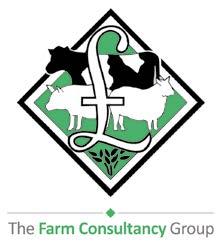
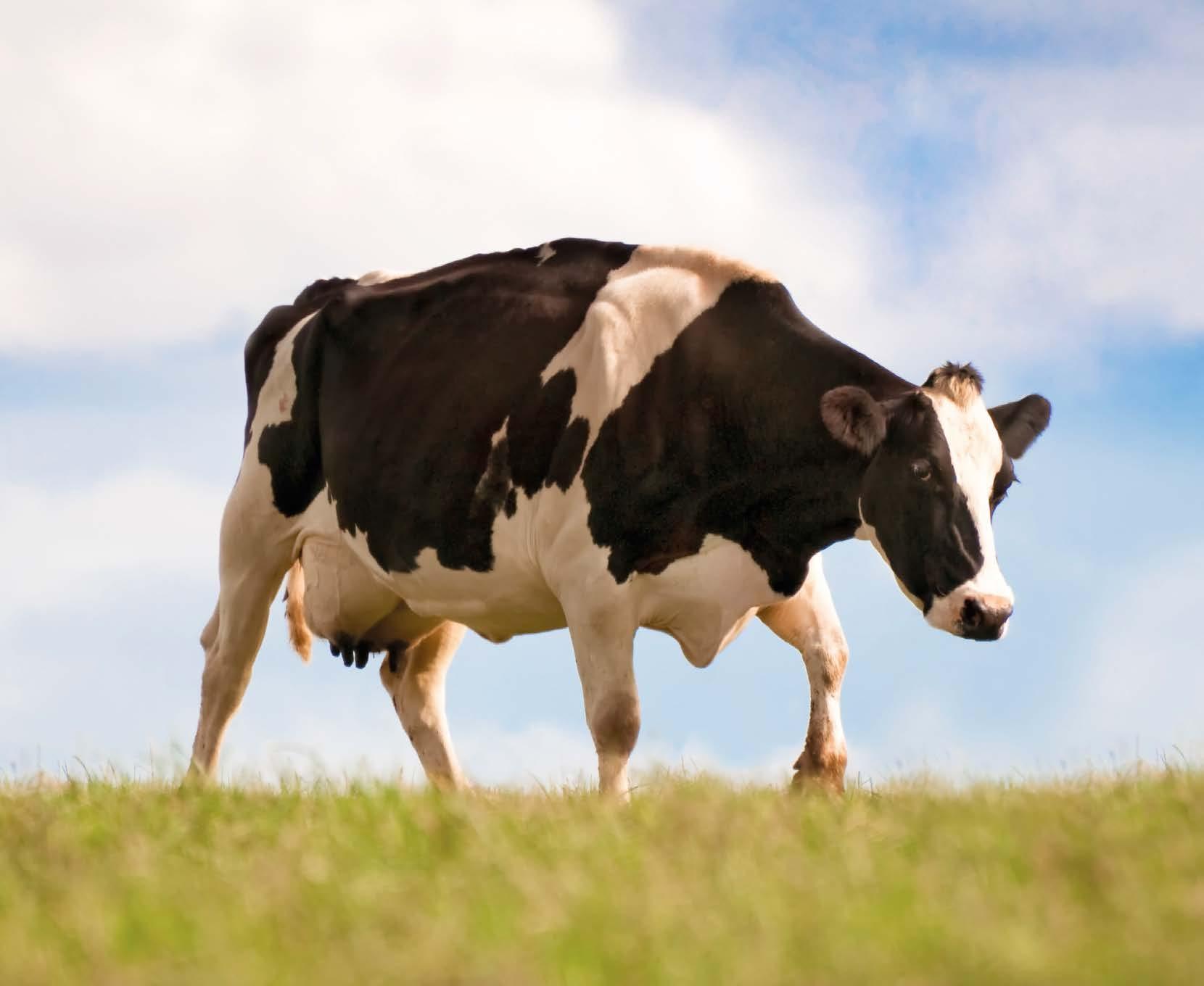
Milk Cost of Production Report 2021 - 2022 Rural
Welcome to the Milk Cost of Production Report 2022. From these times of market volatility, the year ending 31 March 2022 seems a long time ago. There have been a lot of changes since then, but taking a reflective look at business performance has never been more critical.
Milk income remained constant, only moving by £80 per cow, with the modest price increases seen before March 2022 offset by a reduction in yields during the year. The lower yields came from a lower cost base, which caused an overall year-on-year fall of £92 per cow.
There are few surprises in the 2022 performance; good forage growing conditions meant a plentiful supply of highquality forage leading to lower concentrate feed rates.
The grazing season lasted well into the autumn, shortening the more expensive winter housing period. As a result, variable costs related to labour, power and machinery all fell. We also used less bedding and saw a reduction in slurry spreading costs.
There is a marked difference between top performers and the bottom 10% (with the gap widening to £1,234 per cow). Of this, £541 per cow relates to income, although yields were 1,334 litres per cow lower, showing that producing what your buyer wants reaps the rewards. Cost of production should take an equal focus, with this being £693 per cow lower for the top 10% of herds, mainly focussed on feed, labour, power and machinery. There is a high focus on efficiency for the top 10% of herds, allowing year-on-year profit generation.
Prices for the year to March 2022 might seem a distant memory, with milk prices averaging 33.8 pence per litre, most fertiliser bought at sub £300/t and electricity contracts mainly sitting in the 20p unit range. However, whilst milk
prices are now knocking on the door of 50 pence per litre (and being achieved in some cases), fertiliser is nearing £800/t, and electricity contracts are coming up in the region of 65p unit.
Inflation has hit the dairy sector hard over the last six months, especially as milk supply is finely balanced. We have seen cost-tracker milk contracts struggle to keep pace with increasing farmgate milk prices to the extent of market price payment, which indicates one thing – milk is scarce. Now that the balance of power has turned to the producer, it’s time to focus on building balance sheets to make up for the lean years and build future resilience.
The common theme between past and present is that an efficient business leads to profit - even more crucial when considering high prices, more capital tied up in the business, and a greater risk of losses over a short timeframe. The old adage of ‘cash is king’ has never been more accurate, with working capital requirements testing any business due to increased prices and supply chain issues that mean buying inputs earlier.


Challenge creates opportunity – there is the potential for good profits to be made over the year to 31 March 2023, but the focus needs to be on efficiency to maximise these and secure the business for the future.
Do you know where your efficient production level is?
Dan Heal Bradley Causey 07970 890772 01392 351327 daniel.heal@om.uk bradley.causey@om.uk
We expect Budgeted Profits to increase due to higher milk prices by 59% compared to last year.
The important factors to highlight are that farmers need to budget ahead for:
• Cost of capital investment in water quality compliance and slurry storage improvements to meet new legislation.
• The current budget does not reflect the full feed, electricity, and fertiliser costs, especially as these are forward purchased 6-12 months ahead. A fall in milk price shouldn’t happen, but as farmers do not have control over this, we don’t know what the effect of this would be if it does.
Managing cash flow is never so important! With high milk prices and budgets showing relatively good profits, it is easy to become blasé. The emphasis should be on forward planning to manage cash flow, especially:
• Capital Investment – advice on borrowing money and paying it back, interest rates and loan period.
• Interest Rates (which Cost of Production figures do not consider)
• Taxation Planning – higher profits mean a bigger tax bill; therefore, advanced planning and advice are essential.
Costs of Production drives profits
Considering the above points, knowing your future Comparable Farm Profit potential will give you a good insight into where your business could be and show any areas you need to monitor and adjust before it becomes too late!
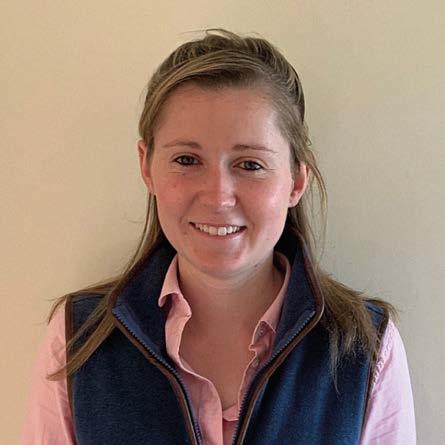
Mark Yearsley Annabel Hole 07984 785190 07980 294816 markyearsley@fcgagric.com annabelhole@fcgagric.com


The sample farms analysed include organic, all milk bonuses, a higher proportion of manufacturing than liquid contracts, plus more aligned contracts than would be the norm across the whole of the UK.
 Mark Yearsley
Annabel Hole
Dan Heal
Bradley Causey
Mark Yearsley
Annabel Hole
Dan Heal
Bradley Causey
2 3
Milk Cost of Production Report 2021 - 2022
Milk Cost of Production Report 2021 - 2022
Key points
1. The average total comparable cost of milk production in the year to 31 March 2022 was £2,300/cow compared to average milk income received of £2,311/cow.
2. The total comparable cost of milk production for the year to 31 March 2023 is projected to be £2,559/cow against projected milk income of £3,102/cow.
3. Milk prices have steadily risen through 2021/2022, although at different rates depending on milk buyer. Ensuring the contract is maximised is vital.
4. Milk income has remained stable for the fifth year in a row, with the rises seen over the summer of 2022 coming too late for the 2021/2022 period.
5. Milk income is expected to increase by £791 per cow to £3,102 as prices rise towards 50 pence per litre over summer. Non-milk income is expected to fall marginally to £350/cow as calf prices ease.
6. Milk yield is expected to fall to 6,600 litres as high temperatures and low rainfall affect summer production of both milk and forage.
7. Feed costs are expected to increase by £46/cow as prices rise and concentrates are fed to replace forage shortfalls.
8. Variable costs are expected to increase significantly as fertiliser price rises come through. Forward
purchases have helped many producers through 2021/2022, although new purchases are at significantly higher prices.
9. Profit expected to increase to £893/cow, with income increasing due to tight milk supplies and the full effect of increasing costs becoming apparent as forward purchase deals come to an end.
10. Profitability has increased from 2020/2021 levels, up to an average of £371/cow. This is the fourth year in a row that profits in excess of £100/cow have been achieved by the average producer.
11. The total comparable cost of milk production for | the top 10% of producers was £2,232/cow compared with £2,925/cow for the bottom 10%, a difference of £693/cow.
12. Labour costs for the top 10% are £419/cow, compared to £627/cow for the bottom 10%. Much of this is paid labour indicating less efficient setups to work with and likely requiring investment to change this.
13. Although removed from the top 10% vs bottom 10% statistics, the performance of organic herds was variable, with some producers achieving profits within the top 10% of conventional farms and equally with some producers falling within the bottom 10% of conventional farms.
Whole sample - actual results compared with projected results
2020/2021
2022/2023
Herd size 269 250 235 (15)
Yield per cow (litres)
6,763 6,600 (163)
Milk income 2,231 2,311 3,102 791
Non-milk income 346 360 350 (10)
Total income 2,577 2,671 3,452 781
Purchased feed 702 694 740 46
Variable costs 454 428 585 157
Labour (paid + unpaid) 498 489 505 16
Power & machinery 543 511 559 48
Administration 117 112 115 3
Property repairs 78 66 55 (11)
Cost of production (2,392) (2,300) (2,559) (259)
Comparable farm profit (CFP) 185 371 893 522
The basis
In order to understand and interpret the results of the survey, it is important to set out the basis upon which these figures have been produced, specifically:
1. The sample consists of Old Mill and Farm Consultancy Group clients who derive their income mainly or solely from milk sales, across a variety of farming systems.
2. All farms have a 31 March year end.
3. In order to make the businesses comparable, rents, interest payments, drawings, tax and capital expenditure have been excluded from the figures and
a labour charge of £30,000 has been included per full time partner/director. Basic Payment Scheme has also been excluded from the income. It should be noted that depreciation has been included in these figures.
4. The projection for 2023 has been calculated by looking at actual costs incurred for this financial year to date along with national trends.
4 5
2021/2022 Projected for
Difference
7,365
£/cow £/cow £/cow £/cow
“Rising milk income is being eroded by rising costs. 2022/2023 brings the opportunity to build balance sheets for the future.” Milk Cost of Production Report 2021 - 2022Milk Cost of Production Report 2021 - 2022
3,500
Top 10% by retained profit per litre vs bottom 10% - 2021/2022
1,000
500 -500
Total
0
2020/2021
Total
Total
2021/2022
Projected for 2022/2023
Herd
Yield
Comparable farm profit (CFP)
Property repairs
Power & machinery Administration
Property repairs
Power & machinery Administration
Variable costs Labour (paid + unpaid)
Purchased feed
Labour (paid + unpaid)
Variable costs
Purchased feed
(99)
Milk income 2,883 2,429 (454)
Non-milk income 364 277 (87)
Total income 3,247 2,706 (541)
Purchased feed 762 928 (166)
Variable costs 467 476 (9)
Labour (paid + unpaid) 419 627 (208)
Power & machinery 428 690 (262)
Administration 101 126 (25)
Property repairs 55 78 (23)
Cost of production (2,232) (2,925) (693)
Comparable farm profit 1,015 (219) (1,234)
1. Herd size expected to decline in 2021/2022 as dry conditions hit forage production, with strong beef prices influencing numbers of cows retained.
2. Variable costs expecting to see large increases as the full effect of fertiliser price increases is seen, coupled with a poorer growing season.
3. Falling yields expected as high summer temperatures affect summer production and forage stocks for winter. Feed prices make substitution with concentrates less appealing.
4. The top 10% of producers received £541/cow more income than the bottom 10%, but their costs were £693/ cow less.
“Cost control remains important, although the focus turns to maximising income for the costs that are committed to.”
67 Key points
Top 10% Bottom 10% Difference
size 287 188
per cow (litres) 6,323 7,657 1,334 £/cow £/cow £/cow
1,500 2,000 2,500
income £2,671 Milk income £2,311
3,000
4,000
income £3,452 Milk income £3,102
Milk income £2,231
income £2,577
Milk Cost of Production Report 2021 - 2022Milk Cost of Production Report 2021 - 2022
4,000
3,500
3,000
2,500
2,000
1,500
1,000
500
Total income £3,247 Milk income £2,883
0
-500
Property repairs
Administration
Power & machinery
Comparable farm profit (CFP)
Property repairs
Administration
Power & machinery
Labour (paid + unpaid)
Variable costs
Purchased feed
Top 10%
Total income £2,706
Bottom 10%
Milk income £2,311
3,000
2,500
Labour (paid + unpaid)
Variable costs
Purchased feed
1,500
1,000
500
2,000 -500
Top 10 %
Bottom 10%
Top 10%
Bottom 10%
Milk
Key points
Non-milk
1. The top 10% received £454/cow more for their milk, with milk buyer having a big effect on income as milk pice rises.
2. There was a difference of £693/cow in the costs of production between the top 10% and the bottom 10%, with the gap closing from the £1,097/cow seen in 2020/2021.
Labour (paid +
Power
Administration
6. The top 10% spent £166 less on concentrates for the milking cows, reducing concentrate usage when the milk price to feed price ratio made marginal litres uneconomical to produce, with lower yields not reducing profitability.
Comparable
7. Combined labour and power and machinery, or ‘Cost of Doing Work’ is £1,317 for the bottom 10%, compared to £847 for the top 10%. This indicates more work is being done in a less efficient manner, and is not generating a return.
4. The average comparable farm profit for the top 10% was 14.50p/litre compared with a loss of 3.07p/litre for the bottom 10%.
0 9. There is a variety of systems and calving patterns in the top 10%, showing all can be profitable if done well with a keen eye on costs.
5. The average yield per cow is significantly lower for the top 10% at 6,323 litres compared to the bottom 10% at 7,657 litres, but there is a huge range within these with the top 10% producing anywhere from 4,151 litres per cow to 11,468 litres per cow. The bottom 10% produced between 4,634 litres per cow and 10,498 litres per cow.
8. The top 10% has a herd on average of 99 head larger than the bottom 10%, with smaller herds having less animals to spread fixed costs and family labour over.
10. There is also a variety of farming systems in the bottom 10% of herds, showing that farming efficiently relies on the farmer and is not based on the system which is run.
8 9 3. All of the key cost categories are significantly higher for the bottom 10%..
“Feed efficiency is vital, along with making the best use of staff time and challenging how tasks are carried out.”
income Purchased feed
unpaid)
Cost of production
£/cow
income Variable costs
& machinery Property repairs
farm profit
Milk Cost of Production Report 2021 - 2022Milk Cost of Production Report 2021 - 2022
Farm profitability by £/cow vs farm profitability by pence/litre shown by calving pattern
Key points
1,500 1,000
All year
Spring calving
Autumn calving
1. There are profitable farms with all calving patterns, and also loss making farms on all farming systems.
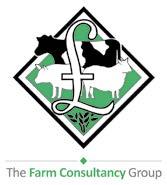
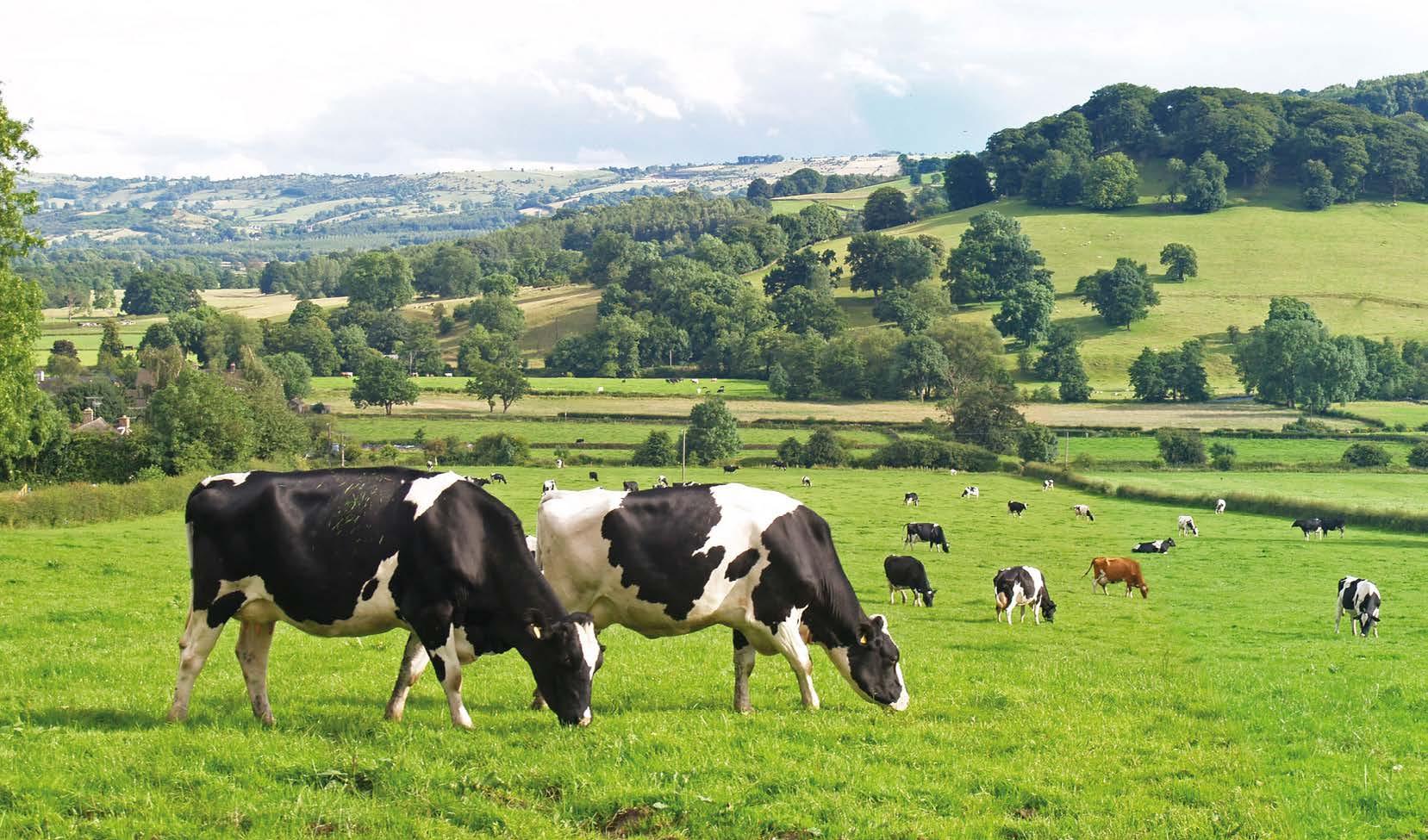
2. The trendline shows that as CFP/litre increases, so does CFP/cow. However, this is not a linear relationship as yields fall when focusing on maximising margin/litre.
3. Spring calving herds often make the most profit on a pence/litre basis, showing their ability to produce cheap milk. This does insulate them against lower milk prices and mean they are more likely to generate a profit.
4. Spring calving herds tend to sit below the trendline for CFP/cow, indicating lower than average yields.
5. As yields climb, profitability per cow increases, although margins are squeezed showing the costs of producing the marginal litres.
6. Profitability has increased from last year on average, the large gap between the to 10% and bottom 10% remains.
11
round calving
500 0 -500 0-10 -5 105 15 20
CFP £/cow CFP ppl Milk Cost of Production Report 2021 - 2022 10 Milk Cost of Production Report 2021 - 2022
Contact
Old Mill Exeter
Leeward House Fitzroy Road Exeter Business Park EX1 3LJ
+44 (0)1392 214635
Chippenham
Unit 2
Greenways Business Park Bellinger Close SN15 1BN
+44 (0)1225 701210
Wells
Bishopbrook House Cathedral Avenue BA5 1FD +44 (0)1749 343366
Yeovil
Maltravers House Petters Way BA20 1SH +44 (0)1935 426181
Also at Frome Livestock Market, Standerwick
enquiries@om.uk | om.uk
The content of this report is for general information only. It should not be relied on and action which could affect your business should not be taken without appropriate professional advice. Please contact your usual Old Mill or Farm Consultancy Group contact or local office.
The Farm Consultancy Group
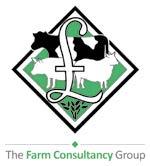
Sherborne
4 Trent Court, Trent, Sherborne, DT9 4SL
+44 (0)1935 850093 midwest@fcgagric.com | fcgagric.com
Financial experts, Old Mill, offer specialist farming accountancy, tax and financial planning services.







 Mark Yearsley
Annabel Hole
Dan Heal
Bradley Causey
Mark Yearsley
Annabel Hole
Dan Heal
Bradley Causey



